Business problems are an integral part of any organization, irrespective of its size or industry. From small startups to large corporations, every business faces challenges that require effective problem-solving strategies to overcome them and achieve success. In today’s fast-paced and competitive business landscape, having the ability to solve problems efficiently is crucial for achieving growth and sustaining long-term success.
In this document, we will discuss some effective strategies for problem solving in business that can help organizations overcome challenges and achieve their goals.
Identifying the Root Cause
The first step towards effective problem-solving is identifying the root cause of the problem. Often, businesses tend to address symptoms rather than addressing the underlying issue, which only offers temporary solutions. By identifying the root cause, businesses can develop a more comprehensive and permanent solution to the problem. This requires a thorough analysis of the problem, understanding its different aspects, and identifying potential contributing factors.
Collaborating with Team Members
Problem solving in business is not a one-person task. It requires collaboration and teamwork to come up with effective solutions. Different team members bring diverse perspectives and ideas to the table, which can help in identifying the root cause and finding innovative solutions. Effective communication and teamwork play a crucial role in successful problem-solving.
Utilizing Data and Information
Data is the backbone of effective problem solving in business. It provides valuable insights into the problem, helps in understanding its complexity, and enables businesses to make data-driven decisions. Analyzing data from various sources, such as customer feedback, sales reports, and market trends, can help in identifying patterns and trends that contribute to the problem. This allows businesses to make informed decisions and develop effective solutions.
Thinking Outside the Box
In today’s constantly evolving business landscape, traditional problem-solving methods may not always be effective. To overcome challenges, businesses need to think outside the box and come up with innovative solutions. This requires a creative and open-minded approach, along with the willingness to take risks and try new approaches. Encouraging a culture of innovation within the workplace can foster this type of thinking and lead to more effective problem solving.
Seeking Expert Advice
Sometimes, problems may seem too complex or challenging for businesses to handle on their own. In such cases, seeking expert advice from consultants, industry experts, or even other businesses can be beneficial. These external perspectives can offer new insights and fresh ideas that may not have been considered before. Additionally, seeking advice from those who have experience in dealing with similar problems can provide valuable guidance and help expedite the problem-solving process.
Continuous Improvement
Problem solving is an ongoing process in business. Even after a solution has been implemented, it is important for businesses to continuously monitor and evaluate its effectiveness. This allows for adjustments to be made if needed and helps businesses stay ahead of potential problems before they arise. Continuous improvement also encourages a culture of learning and adaptation within the organization, leading to more efficient problem-solving in the future.
Finally, effective problem solving is crucial for the success of any business. By promoting a problem-solving mindset, encouraging innovative thinking, seeking expert advice, and continuously improving processes, businesses can overcome challenges and achieve their goals. It is important for organizations to understand that problems are inevitable, but it is how they approach and solve them that sets them apart from their competitors. With the right strategies in place, businesses can turn any challenge into an opportunity for growth and improvement. So, it is essential for businesses to prioritize problem-solving and continuously work towards finding effective solutions in order to thrive in today’s competitive market.
Effective Networking Techniques in Business Events
Networking can often seem intimidating, but it is an essential skill for success in business. Attending and actively participating in events such as conferences, seminars, and meetups is a great way to connect with like-minded professionals, build relationships, and expand your professional network. In this guide, we will discuss some effective techniques to help you network efficiently at business events.
Preparation is Key
The key to successful networking starts with preparation. Research the event beforehand and have a clear understanding of why you are attending. Set goals for yourself, such as meeting a certain number of people or connecting with specific individuals or companies. This will help you stay focused and make the most out of your time at the event.
Start with a Strong Introduction
The first impression you make is crucial in networking. Introduce yourself confidently, state your name and job title, and be ready to give a brief summary of what you do. Make eye contact, smile, and offer a firm handshake. This will convey confidence and show that you are genuinely interested in connecting with others.
Be a Good Listener
Networking is about building relationships, and the key to any successful relationship is good communication. Be an active listener and show genuine interest in what others have to say. Ask open-ended questions and listen attentively to their responses. This will help you understand their needs, interests, and potential opportunities for collaboration.
Share Your Knowledge
Networking events are not just about making new connections but also sharing your knowledge and expertise. Be prepared to share valuable insights, opinions, and ideas with others. This will demonstrate your expertise and position you as a thought leader in your industry.
Follow Up
After the event, make sure to follow up with the people you connected with. Send personalized emails or connect with them on professional networking sites like LinkedIn. This will help you maintain the relationships you built and show that you are serious about staying connected.
Stay Engaged
Networking is an ongoing process, not a one-time event. Stay engaged with your new connections through online interactions, attending industry events, or even meeting for coffee. This will help you strengthen your relationships and open up more opportunities in the future.
Networking can lead to unexpected opportunities. Be open-minded and willing to explore new connections and collaborations. You never know what exciting opportunities may arise from a simple conversation at a networking event.
Effective networking is crucial for professional growth and success. Remember to always be genuine, open-minded, and willing to share your knowledge with others. With the right mindset and approach, networking can become a powerful tool for achieving your professional goals.
8 Effective strategies for overcoming employee resistance to change.
Change is an inevitable part of any organization. It could be in the form of new processes, policies, procedures, or even a change in leadership. However, one of the biggest challenges that organizations face while implementing changes is employee resistance.
Employee resistance to change refers to the unwillingness of employees to accept and adapt to new changes within the organization. This can manifest in various forms, such as lack of motivation, decreased productivity, and even open defiance towards the change.
Before diving into effective strategies for overcoming employee resistance to change, it is essential to understand the underlying reasons behind it. Change can be unsettling for employees as it disrupts their routines and creates uncertainty about their roles and responsibilities. Additionally, some employees may fear that the change could negatively affect their job security or work-life balance.
Moreover, employees may resist change if they feel left out of the decision-making process. When changes are imposed without considering the opinions and concerns of employees, it can lead to a lack of trust and resentment towards the change.
Organizations must proactively address employee resistance to change to ensure a smooth transition. Here are some effective strategies that can help overcome employee resistance:
- Communicate effectively
Proper communication is crucial when it comes to implementing changes. Organizations must communicate the reasons behind the change, its benefits, and how it aligns with the company’s vision and goals. This will help employees understand the purpose of the change and create a sense of trust and transparency.
Moreover, organizations must also listen to employees’ concerns and address them promptly. This will make employees feel heard and valued, increasing their willingness to accept the change.
- Involve employees in the process
Involving employees in the decision-making process can significantly reduce resistance to change. Organizations can do this by seeking employee feedback, suggestions, and ideas before finalizing any changes. This not only makes employees feel included and valued but also helps in identifying potential challenges and finding solutions.
- Provide adequate support and training
Employees may resist change because they feel ill-equipped to handle the new processes or systems. Organizations must provide adequate support and training to help employees adapt to the change seamlessly. This will not only increase their confidence but also make them more receptive to the change.
- Lead by example
Leaders and managers play a crucial role in managing employee resistance to change. They must lead by example and demonstrate their commitment to the change. This will motivate employees to follow suit and trust in the change.
- Celebrate small wins
Change can be overwhelming, and employees may feel demotivated or discouraged during the transition. Organizations must celebrate small wins and milestones to keep employees motivated and engaged in the change process.
- Communicate progress and address roadblocks
Regular communication is key when implementing changes. Organizations must provide regular updates on the progress of the change and address any roadblocks that may arise along the way. This will ensure that employees stay informed, motivated, and aligned with the change.
- Foster a culture of continuous improvement
Organizations must foster a culture of continuous improvement to prepare employees for future changes. This can be done by encouraging feedback, promoting learning and development opportunities, and recognizing and rewarding innovative ideas.
- Seek external assistance
In some cases, employee resistance to change may be too significant or complex to handle internally. In such cases, organizations can seek external assistance from change management consultants who have experience in dealing with employee resistance and can provide valuable insights and strategies.


 عربي
عربي












